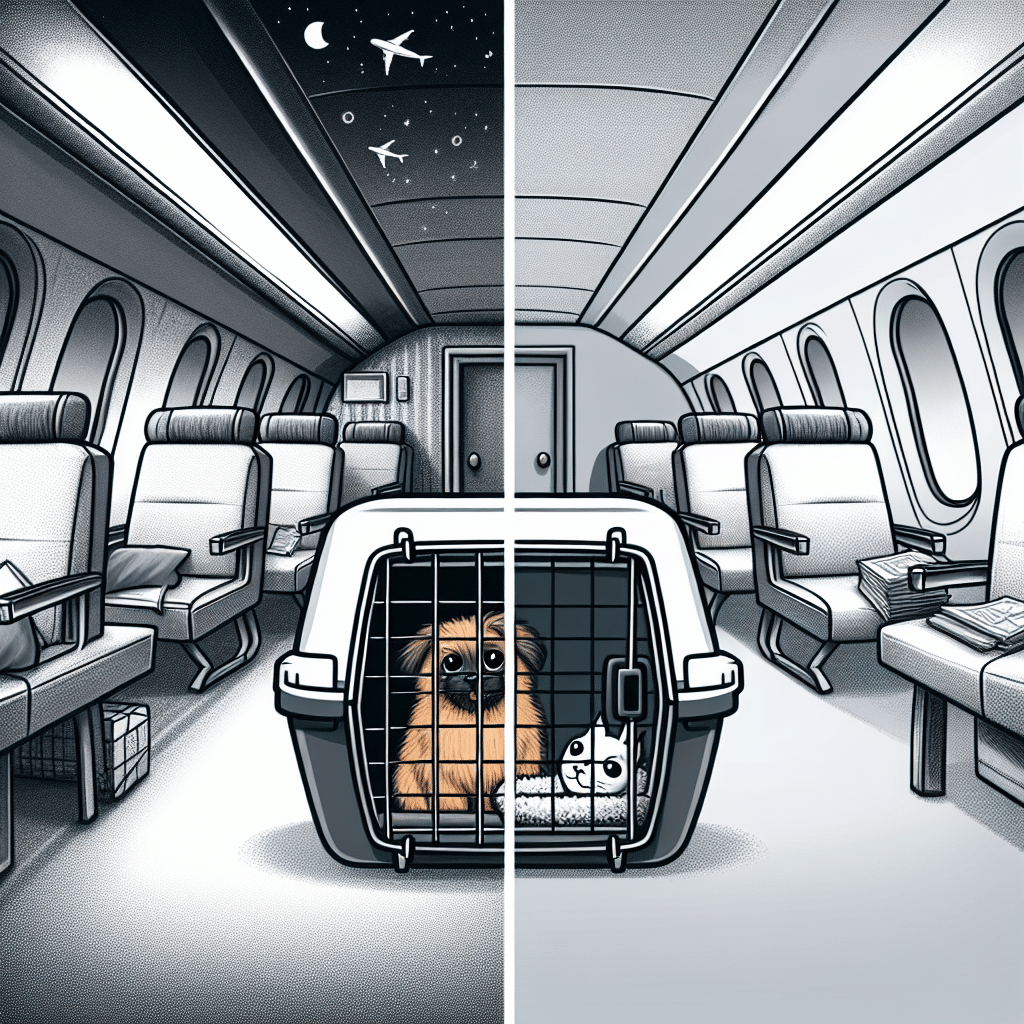In-Cabin vs. Cargo Travel: What’s Best for Your Pet
When planning air travel, deciding how to transport your pet is essential. Both in-cabin and cargo travel have unique advantages and challenges. Understanding the nuances can help pet owners choose the best option based on their pet’s size, temperament, and health.
Understanding In-Cabin Travel
Definition and Requirements
In-cabin travel means your pet flies with you in the aircraft’s passenger cabin. Typically, airlines allow pets that weigh up to 15-20 pounds, depending on the airline’s policies. They must be transported in an appropriate carrier that fits under the seat in front of you. Each airline has specific dimensions, so it’s crucial to check with your airline before booking.
Advantages of In-Cabin Travel
-
Closer Bonding
Traveling in the cabin allows you to stay close to your pet, reducing their anxiety. This bond can be comforting for both pet and owner, especially during the stress of flying. -
Less Stressful Environment
The cabin offers a more controlled environment than cargo holds. Pets can experience the sights and sounds of travel from a familiar place, which can alleviate fear. -
Immediate Access
If your pet requires immediate attention due to health concerns or anxiety, being in the cabin grants you access right away rather than having to wait until landing. -
Lower Temperature Extremes
In-cabin conditions tend to be more stable regarding temperature and air quality compared to cargo areas that can experience uncontrolled temperatures or odors.
Challenges of In-Cabin Travel
-
Space Limitations
The size of the pet and the carrier is a significant limitation. Standard carriers must fit under the seat, which may pose problems for larger dogs or less accustomed pets. -
Other Passengers
Larger or more vocal pets may disturb other passengers, which can lead to stress for both the pet and the owner. It’s important to consider how your pet may react to being in such close quarters with strangers. -
Health Concerns
Pets with particular health issues may be better suited for the cargo hold, where temperatures and conditions are regulated differently. Always consult with your veterinarian before flying. -
Cost
Flying in-cabin may come with fees, often ranging from $75 to $200. These costs can add up, especially for multiple pets.
Understanding Cargo Travel
Definition and Requirements
Cargo travel refers to pets being transported in the airplane’s cargo hold. Airlines usually accommodate larger pets requiring special carriers, often exceeding the in-cabin restrictions. Advanced booking and specific arrangements are generally necessary for cargo travel.
Advantages of Cargo Travel
-
Space for Larger Pets
Cargo travel allows for bigger breeds that wouldn’t qualify for in-cabin travel. This is one of the most significant benefits for larger dog owners or multi-pet families. -
Temperature Control
Most airlines have climate- and pressure-controlled compartments for pets traveling in cargo. This helps ensure that pets stay comfortable during flights, even on long-haul journeys. -
Less Stress for Anxious Pets
Some pets feel more secure in a confined space, making cargo travel a better option for certain animals. If a pet is overly anxious, keeping them in a more stable environment away from the noise and commotion of the cabin may reduce stress. -
Affordability
In many cases, cargo travel can be more affordable than in-cabin options, especially for larger pets. Many airlines do not charge the same fee for pet cargo as they do for in-cabin travel.
Challenges of Cargo Travel
-
Time Separations
Pets traveling in cargo are away from their owners for an extended period. This can heighten anxiety and fear, especially if pets aren’t accustomed to being alone. -
Transfer and Wait Times
Pets may spend additional time in haulage areas during layovers. If there are delays, they may experience more waiting time in unfamiliar settings. -
Safety Concerns
Although cargo holds are designed to be secure, the inherent risks of being away from their owners can raise concerns among pet owners. Higher risks of lost pets or incidents of mishandling exist when pets are separated from their owners and placed in cargo. -
Health Risks
Traveling in cargo can pose health risks for pets with specific medical conditions or vulnerabilities. Always consult your vet to evaluate whether your pet’s health allows for cargo travel.
Making the Decision: Factors to Consider
-
Pet Size and Breed
Evaluate the size and breed of your pet. Larger animals likely require cargo travel, while smaller pets can usually accompany you in-cabin. -
Pet Temperament
Consider how your pet behaves in stressful situations. Anxiety-prone pets may fare better in an owner’s presence, while calm pets might handle cargo just fine. -
Travel Distance
Longer flights may taxing for your pet. In-cabin travel typically offers a more comforting environment for extended periods. -
Duration of the Journey
Understand the total travel time, including layovers. Longer delays may influence whether in-cabin or cargo travel is more suitable. -
Health Considerations
Consult with a veterinarian. Chronic illnesses, age, and general health should be taken into account when deciding the best mode of travel for your pet. -
Airline Policies
Each airline has different policies regarding pet travel. Check all requirements including carrier sizes, fees, and documentation needed to ensure a smooth travel experience.
Conclusion
Evaluating pet travel options involves assessing your pet’s needs, sizes, health, and your travel plans. Whether in-cabin or cargo travel is the right fit depends not only on the pet’s characteristics but also on individual owner preferences. With thorough research and informed decision-making, your pet can have a safe and comfortable flight.
